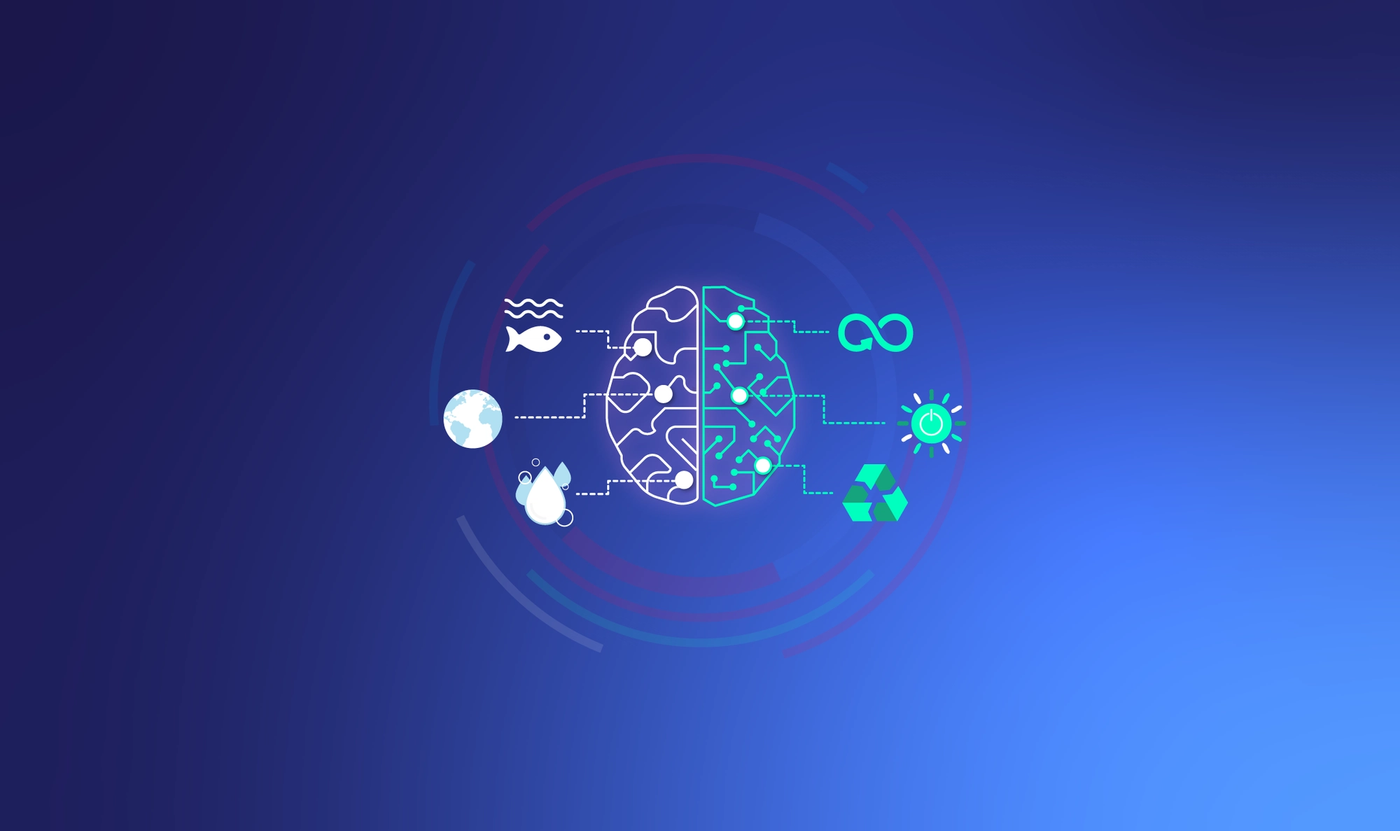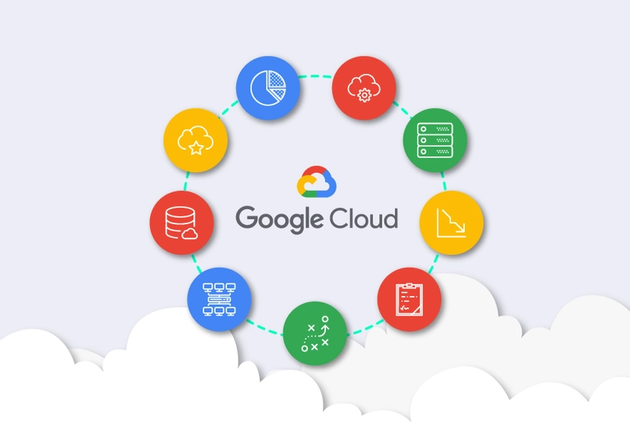Data-Driven Solutions to Sustainable Development Goals: 5 Real-Life Examples
Modern life is complex and has a big footprint—one that continues to grow and desperately needs to be stopped. To minimise that footprint, there are a variety of goals we collectively aspire to such as net zero.
Sustainability is not just a buzzword. It echoes the finish line we intend to cross.
In an effort to become more environmentally sustainable, businesses are turning their attention to tech and data-driven solutions. By investing in technologies such as cloud computing and machine learning (ML) they look for innovative ways to minimise their impact.
In this blog, we’ll be looking at how sustainable development goals (SGDs) are approached through data-driven solutions. We’re also asking what role ML plays in the ‘Data for Good’ movement as it frequently appears in data-driven solutions. Finally, we’ll highlight a few case studies, dynamics and tools to take into account when you’re considering developing your own sustainability focused data-driven solutions.
Throughout, you'll find snippets from our ongoing hackathon with Google Cloud on how to use data for good. If you’d like to get involved in the hackathon, register here.
4 Drivers of Sustainability
The green economics paradigm speaks to the concept that “the economy operates within social relationships and the whole of society is embedded within the natural world.”
Another view of this says there are broadly two camps of SGDs: environmental and social justice. We cannot fully call them “camps” though because they are so fundamentally intertwined. They are really one camp.
We see that there are four main drivers of sustainability given the capitalist structure of most countries in the world:
- brand image
- cost savings
- regulatory compliance
- competitive advantage through innovation
Driver #1: Brand Image
Attempts to change an organization’s brand image towards a green-focus is far more complex than running a simple marketing campaign or even adjusting the orientation of a single business unit as Charles Radclyffe pointed out at Contino’s Data for Good Hackathon.
Only the companies that are able to truly include sustainability at the heart of their growth, transformation and innovation will be able to steer clear of mere virtue signalling or greenwashing.
Driver #2: Cost Reduction
Cost reduction is yet another motivating factor towards sustainability. For example, UPS developed routing software to inform their delivery driver exactly where to go. This results in $400 million in savings and reduces fuel consumption by 10 million gallons per year. This point is quite easy to understand and really highlights the interconnection between economic and environmental sustainability.
Driver #3: Regulatory Compliance
Compliance around renewable portfolio standards (RPS) and economic, social and governance (ESG) regulations is yet another driver. It can push utility companies along with all other companies towards operations that are greener.
ESG-base ratings and metrics from companies such as EthicsGrade are becoming quite powerful tools in humanity's journey to a green future. Companies now must be more transparent than ever and must prove their green credentials less the loose out on future investment.
Not being green means not being sustainable means no return on investment in the future. Policy can power when there is an active enforcement mechanism.
Driver #4: Competitive Advantage Through Innovation
The companies that have leaned into digital transformation have already learned that adopting new technologies is critical to stay competitive. Coupling ESG strategies and digital transformation in pursuit of innovation is a wise route because it makes leveraging the other three drivers above far, far easier. Contino’s own Deepak Ramchandani spoke to how we can rise to this challenge and the role that the shared sustainability model plays.
Looking at developing data-driven sustainability solutions through the lens of investing is highly useful given the drivers discussed above. In particular, it is invaluable to understand ESG metrics which are increasingly being used by financial investors to qualify investments. This feature of investing means the future of SGDs is tied to data-driven insights.
Obtaining a good ESG rating can be quite hard—even for ambitious companies. ESG at the core of a company’s future growth is essential less it be mere virtue signalling or green washing.
5 Real-Life Examples of Data-Driven Solutions
Below are five examples where the advantage of innovating is the key factor in these organisations’ sustainable development—which is linked to one of the other three main drivers.
All five examples leverage Google Cloud to power data-driven innovation.
Example #1: Google’s Carbon-Intelligent Computing Platform Leverages ML to Optimise Data Centre Energy Usage
Google knew well that “thousands of racks of humming servers use vast amounts of energy; together, all existing data centers use roughly 2% of the world’s electricity, and if left unchecked, this energy demand could grow as rapidly as Internet use.” With that in mind the company has worked tirelessly over several years to optimise their data centres energy usage by leveraging ML techniques.
The latest iteration of this is Google Cloud’s new carbon-intelligent computing platform that “focuses on shifting tasks to different times of the day, within the same data center. But, it’s also possible to move flexible compute tasks between different data centers, so that more work is completed when and where doing so is more environmentally friendly.”
Through this data-driven innovation, Google Cloud is able to offer an even greener brand, cut some costs as this approach improved their PUE, and curb any risk associated with future regulator compliance. Bottom line is this will help the company be more competitive.
Example # 2: Tomorrow’s electricityMap Enables Businesses to Evaluate the Carbon Footprint of Electricity Usage
Tomorrow’s journey with their product electricityMap is grounded in a hard reality—the world will miss the biggest decarbonising opportunity without granular data of electricity production and consumption. This data model can be complex due to the challenges they confront from Guarantees of Origin and the need to replace industry assumptions with intelligent estimations via ML.
electricityMap did not exist until recent years and is a great example of a pure innovation play as it enables other companies to pursue data-driven solutions that would have previously been impossible.
Example # 3: SunPower Leverages Google Cloud AI/ML Technology to Accelerate the Design of Solar Panels
SunPower understands that scaling adoption of solar power panels requires empowering end home and commercial customers to design rooftop solar configuration—a task that is backed by ML.
Using data-driven solutions from Google Cloud to accelerate the solar panel design process, SunPower makes solar energy much more accessible to consumers.
Example # 4: The Zoological Society of London Uses ML to Speed Up Data Analysis of Conservation Footage
The Zoological Society of London understands that improving our knowledge of climate change’s impact on biodiversity can be greatly empowered through an image recognition solution they developed.
The society uses camera traps to monitor the abundance of different species as well as their behaviour. With Google Cloud’s AutoML solution, conservationists can use ML to create image recognition models to identify species in camera trap images. This means they can spend less time on data analysis and more time on important conservation work.
Example #5: The Stella McCartney Foundation and Current Global Use Data Analytics and ML to Help Fashion Brands Become More Sustainable
The Stella McCartney Foundation and Current Global understand that the fashion industry accounts for 20 percent of wastewater and 10 percent of carbon emissions globally. To address this, the foundation is developing a tool to provide fashion brands a more comprehensive view into their supply chain where much of the environmental impact occurs and where brands have little to no visibility.
See more stories from Google Cloud clients here.
The Definitive Guide to Cloud Migration in the Enterprise: Here Be Dragons!
The road to cloud migration is full of DRAGONS...
We explore the four dragons that are most likely to burn your transformation to the ground and the tools to slay them!
What Tools Will Unlock These Data-Driven Solutions?
Now after seeing all those awesome examples, you want to do something right?
Contino works extensively with Google Cloud and there are a number of tools on that platform for researchers, data scientists, data engineers, ML engineers, data governance officers, solutions architects and CTOs to deliver data-driven solutions like the ones mentioned above.
Here are the top four tools you should know about:
Vertex AI
Vertex AI is a single platform unifying the ability to manage data, prototype, experiment, deploy models, interpret models, and monitor models in production without requiring formal ML training. This means your data scientists don’t need to be ML engineers. Moreover, this tool requires nearly 80% fewer lines of code to train a model versus competitive platforms according to internal Google research.
This affords data scientists and ML engineers across all levels of expertise the ability to implement ML Operations (MLOps) to efficiently build and manage ML projects throughout the entire development lifecycle. Approaches such as this are critical when considering nearly two in five companies cite a lack of technical expertise as a major roadblock.
Vertex AI can cater for vision, language, dialogue and tabular ML and AI tasks as well as enable advanced MLOps practices through deploying pipelines and monitoring.
BigQuery
BigQuery is a foundational tool for any data analytics or ML performed on Google Cloud. It is a massive, serverless OLAP data warehouse that has some of the fastest query times for terabyte and petabyte scale data. Data warehousing has evolved into its modern form thanks to tools such as this.
Other key highlights include ability to train and deploy ML from the warehouse, streaming inserts into tables, federated queries with external data sources, cross-region replication and failover, dynamic scaling of individual queries, extremely low storage costs, and truly minimized maintenance—dare I say zero maintenance.
Looker
Looker is a next generation business intelligence tool, which unlike its older competitors can function as an operational layer to access data or even as the end user application—something more than just a dashboard.
“Operational” takes on a new meaning when you consider the action button functionality that Looker enables along with the extension framework offered by the tool. It allows developers to make an HTTP request directly from Looker! What that means is we can in fact trigger the Cloud Build pipeline we built above through a GUI instead of CLI.
For example, insights from electricityMap could be coupled with another dataset within Looker. Not only could this be used to derive insights but Looker’s features could be used to build functionality that enables integration with others services such as Salesforce or something less obvious like the ability to automate the purchase of data to validate the exposed insights form remote sensing companies like Planet.
Google Earth Engine
Speak of remote sensing, Google Earth Engine offers a truly unique way to access, parse, combine, and derive insights from petabytes of observational satellite images as well as other GIS assets. While not on Google Cloud, it is an adjacent tool.
In Summary
As more and more businesses wake up to the reality that their activities have major environmental and societal consequences, there is a rush to invest in more sustainable technologies. This is generally pursued through one of the four drivers we covered earlier on—brand image, cost savings, regulatory compliance and competitive advantage through innovation—and aided through a number of technologies including ML.
We’ve looked at how companies like Google and Tomorrow are leading the way in this space, leveraging ML to help other businesses understand and minimise their impact. We’ve also highlighted some of the best tools out there to help you follow in their green footsteps - to quickly iterate and chart your own path.
If you’re looking at what you can do as a business to meet SGDs and improve your ESG ratings through innovative digital transformations, get in touch!
We’re also running a hackathon right now with Google Cloud on how to use data for good. If you’d like to get involved, register here.







